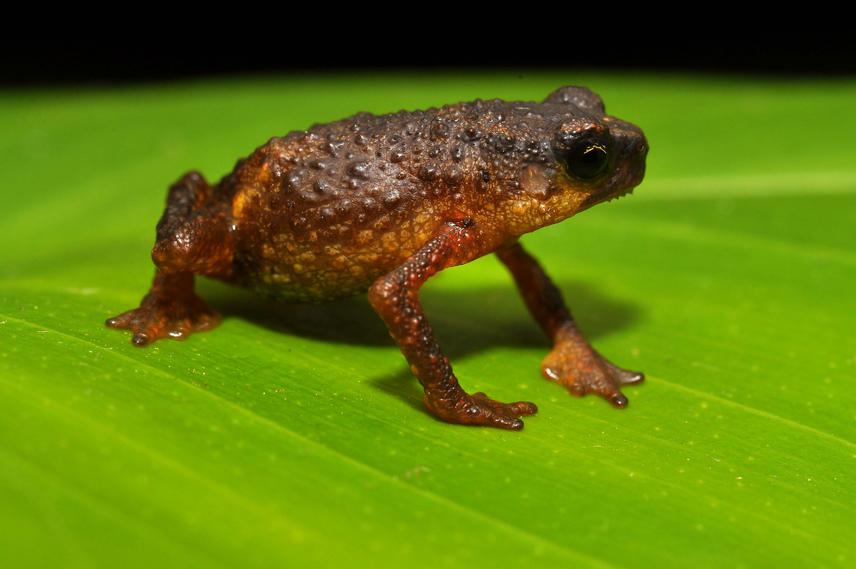Pui Yong Min
The project aims to establish the Bornean Amphibian Conservation and Rescue Center (BACRC), in Borneo, in ensuring a long-term ex situ management of the threatened and endemic amphibian species.

The Critically Endangered Pelophryne linanitensis.
At present, around 173 amphibians are known from Borneo; 66.9 % are endemic and 23% are listed in the IUCN Red List of Threatened Species Categories; 60% are facing population declines and 24.2 % are considered facing high risk of extinction in the wild; many are restricted to a mountain range and habitat species-specific. These groups probably face high risk of extinction in the wild with the emerging threats, such as the deadly amphibian pathogen Batrachochytrium dendrobatidis (Bd) and widespread of habitat destruction. In response to the threats, many amphibian species rich countries have established ex situ management to ensure survival of amphibian species. However, no such effort was done in Borneo although the island is known as an amphibian rich site. Lacking of the knowledge and capacity to take care or breed Bornean amphibian in captivity when wild population is threatened make the future rescue efforts become uncertain. To address this concern, the ex situ management is immediately needed to ensure long-term survival of the Bornean amphibian, especially Bornean endemic and threatened species.
The proposed project aims to establish the Bornean Amphibian Conservation and Rescue Center (BACRC), the first of its kind, in Borneo. This centre is designed to ensure a long-term ex situ management of the threatened and endemic amphibian species in Borneo, in emphasis capacity building and skill development.
In the first phase, two critically endangered species of Bornean Dwarf Toad were selected for ex situ conservation management, Pelophryne linanitensis and Pelophryne murudensis. Both species are endemic to Mount Murud and restricted to mountain forest, at 2,250 m asl and only known from an area smaller than 5 km2. Only a few specimens have been collected since the species being described, and the larvae form and reproductive mode of both species are remain unknown.
Under this project, long-term captive assurance populations will be established to buffer against sudden population decline and extinction in the wild. In additional, to advance the understanding of the natural history of both selected species, including data on densities, habitat occupancy, sex ratio, size structure, activities, call, microhabitat use, diet, behaviour and reproduction.
The centre will provide a permanent capacity for amphibian related disease monitoring and future ex situ management of Bornean threatened species in biosecure husbandry. New natural history knowledge and captive husbandry guidelines on Pelophryne linanitensis and P. murudensis will contribute essential information for species conservation management plans and will be useful as a model guideline for others highland toad species in Borneo, and adjacent regions.